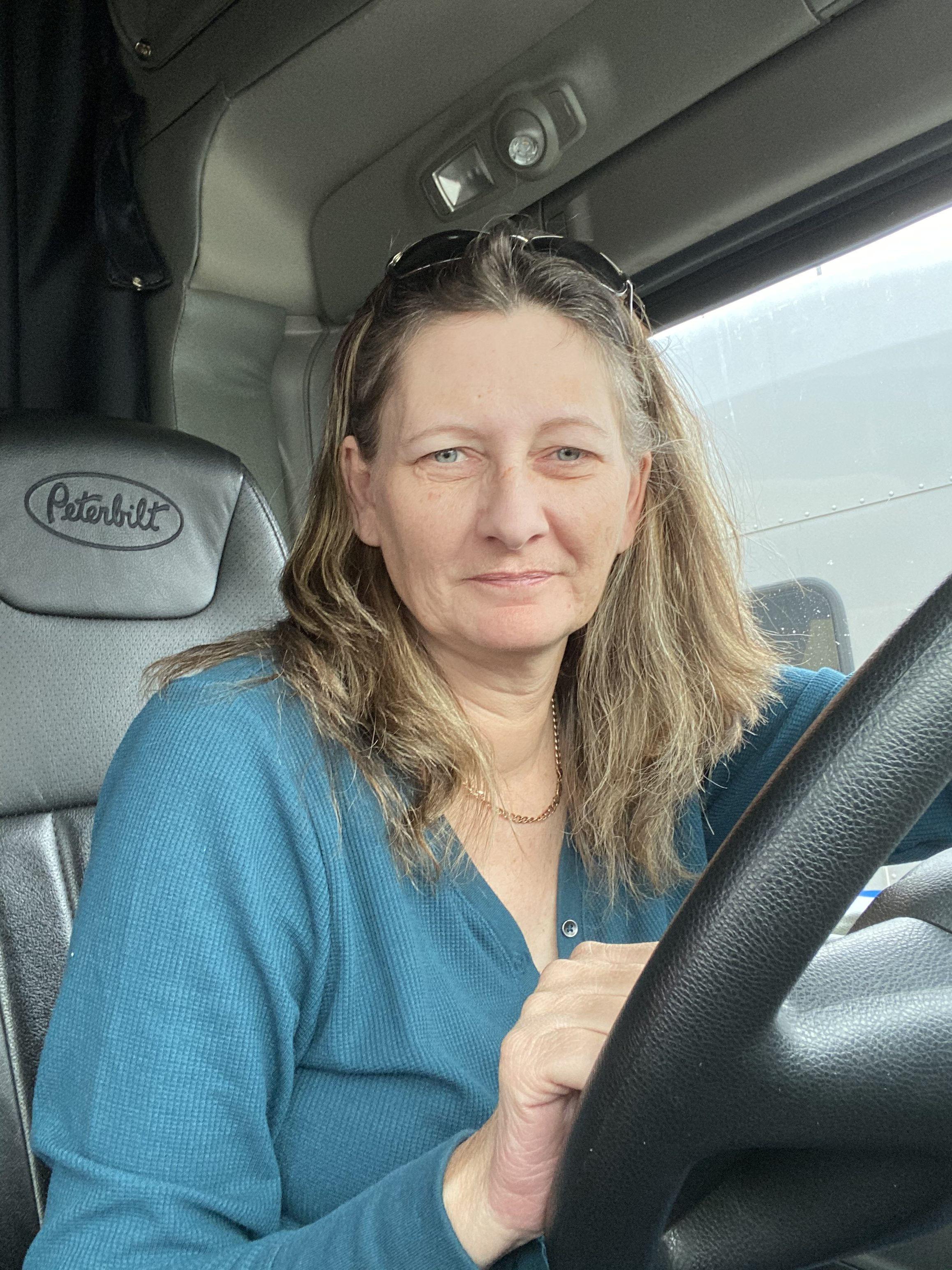
A dear friend (actually sibling) takes off in her camper almost every year to travel the back roads and explore the USA. She has been deaf since the age of two.
This often brings up questions. The most common? “How does she hear sirens?” or “How would she hear a horn honking?” The answer? Her attention to visual clues is acute. Unlike hearing drivers, she is not easily distracted by noises that surround us on the road. How interesting to learn about deaf big-rig drivers.
One such driver is named Suzie.
When Suzie Helgerson, 54, drives down the highway in her big rig, she sees emergency vehicles before most hearing people hear the sirens. Helgerson has been deaf since she became sick with German measles at the age of 6. She wears a hearing aid and communicates through American Sign Language and speaks using an interpreter. She can read lips when a person is directly facing her and can speak in response, but when someone doesn’t understand what she’s saying, she writes on a notepad, types on her phone, or uses sign language if the person knows it.
Helgerson, based in Waupaca, Wisconsin, has always loved to travel and spent as much time as she could riding with her husband, Duke, also a deaf trucker. As her children got older, she started going on the road with him more often, always wishing that one day she could be behind the wheel instead of in the passenger seat.

Suzie Helgerson
Her dream of becoming a trucker and being able to team drive with Duke seemed out of reach. At the time, to earn a CDL the DOT required passing a “whisper test,” — see “Meeting the standards” below — which excluded most Deaf people from trucking careers.
That has since changed: In 2013, after advocacy from Deaf Truckers United and the National Association for the Deaf, the Federal Motor Carrier Safety Administration granted its first set of exemptions from the hearing portion of the physical, giving Helgerson and other deaf and hard-of-hearing individuals the ability to obtain Class A CDLs.
The thinking behind the change is that trucks today are equipped with technology that levels the playing field for Deaf truckers.
Once the exemptions were in place, Helgerson began the journey to become a Deaf trucker. She says she relied on DTU (Deaf Truckers United) for support while navigating the process. She submitted the paperwork and application for the required hearing waiver, completed 10 weeks of training with Fox Valley Technical College (where she used an interpreter), passed her CDL exam and got her official waiver to operate a CMV in 2016.
While the hoops she had to jump through were considerable, she’s thrilled to have achieved her dream. In fact, as Wisconsin’s first female Deaf trucker, she continues to be a trailblazer in her industry.
Helgerson takes most of the challenges in stride and continues to support Deaf drivers through her work with DTU.
“She believed she could, so she did”
(Carolyn Magner with Trucker’s News)












February 21, 2020
asl, deaf, deaf community, deaf education, Equal Access, sign language